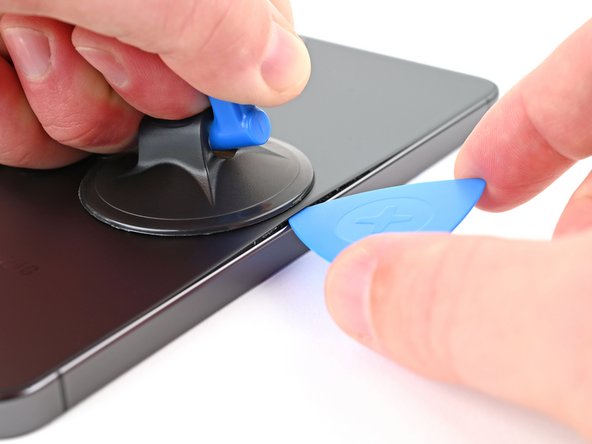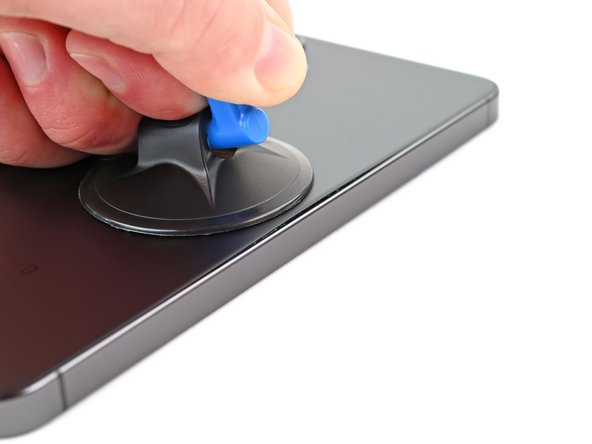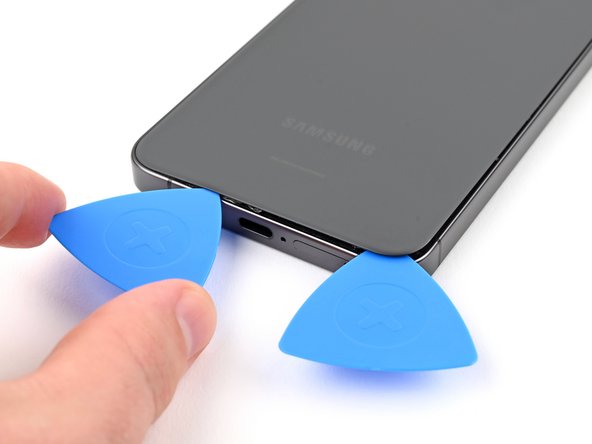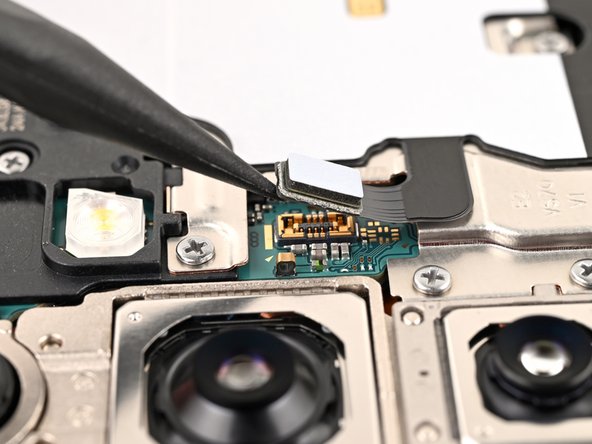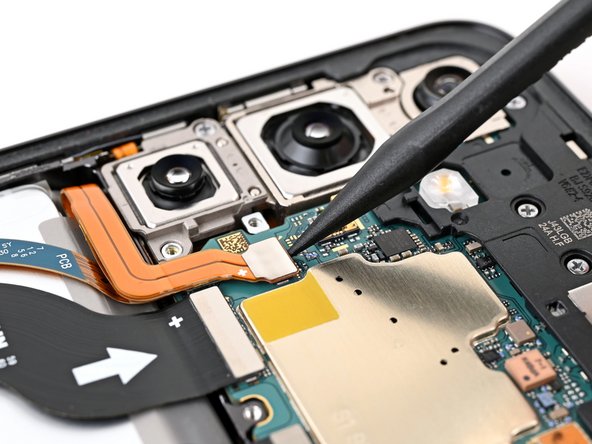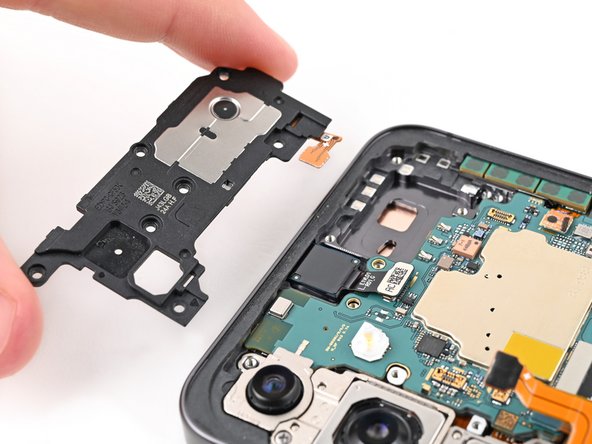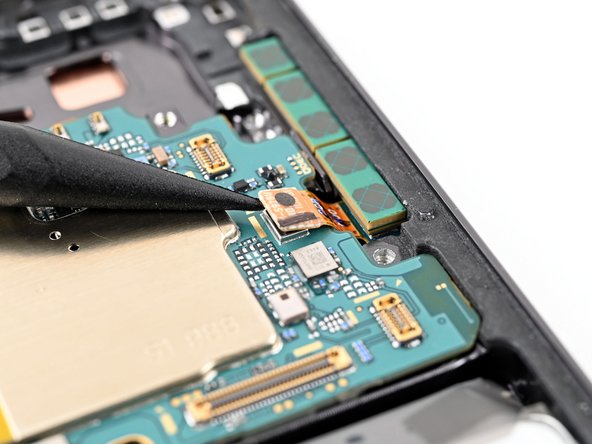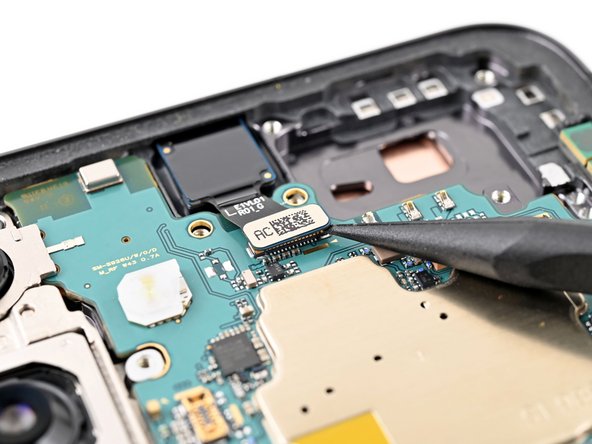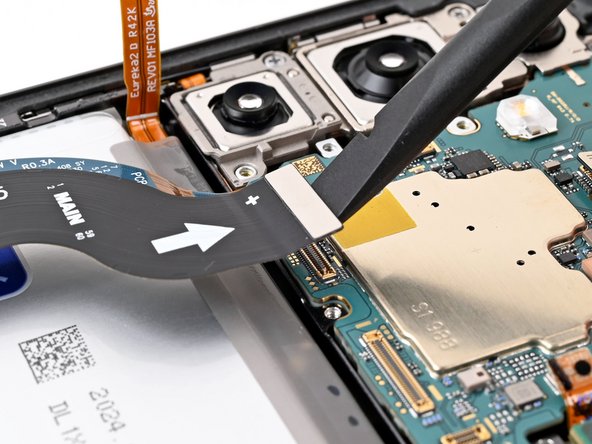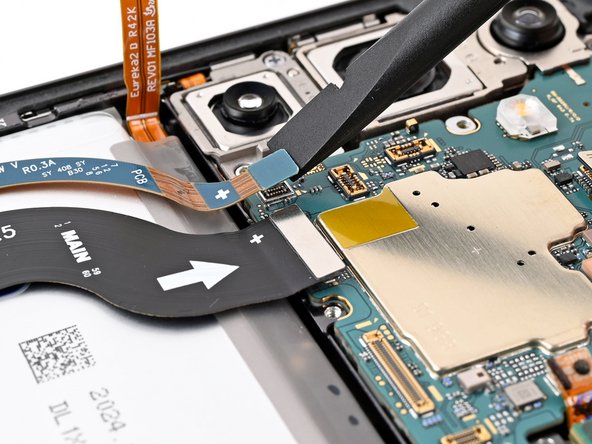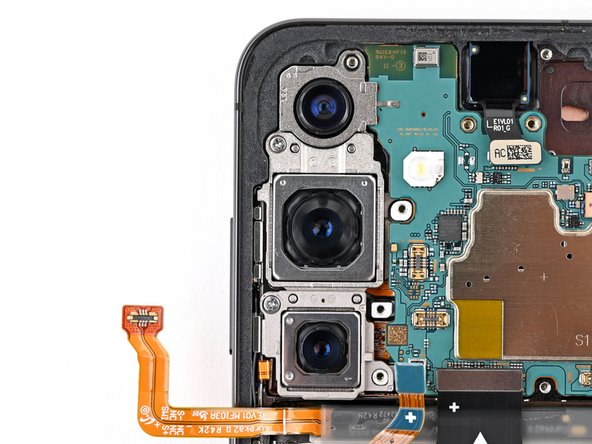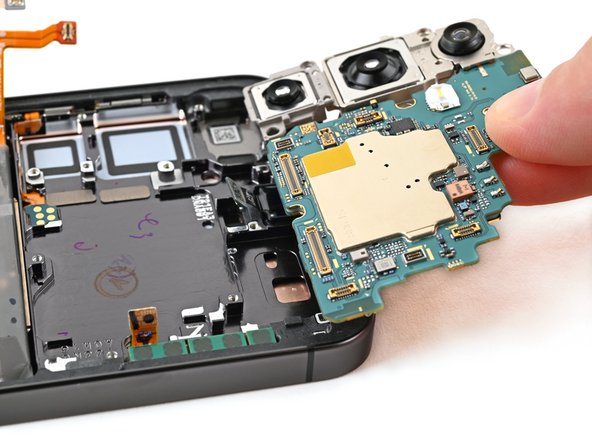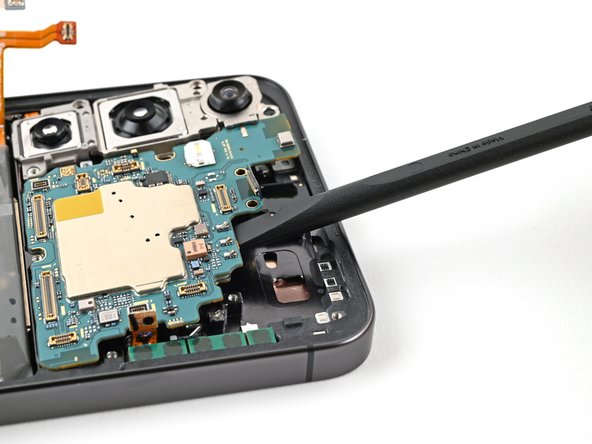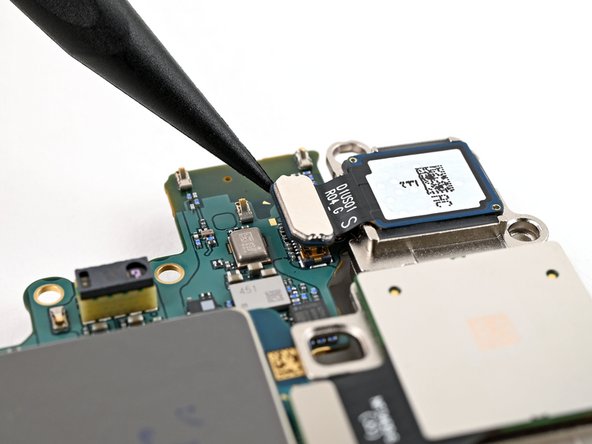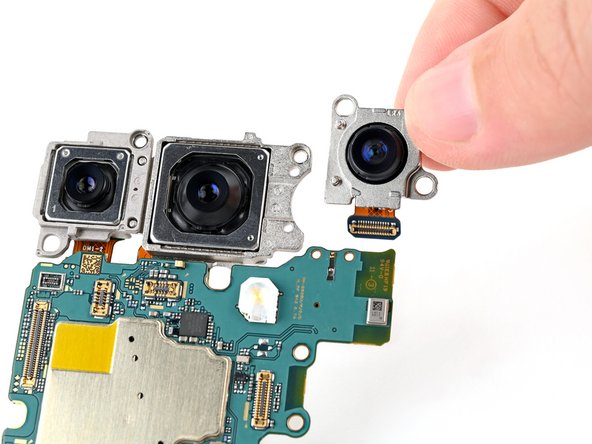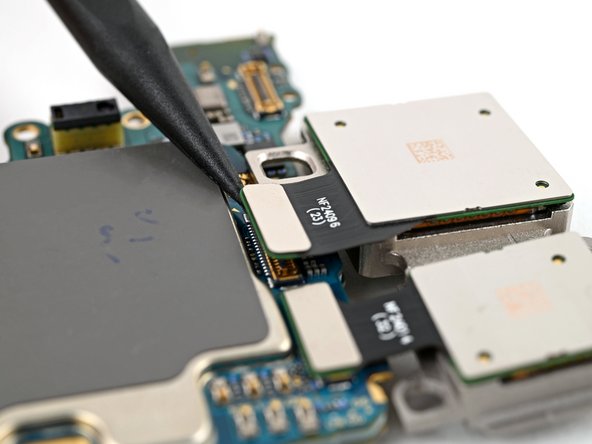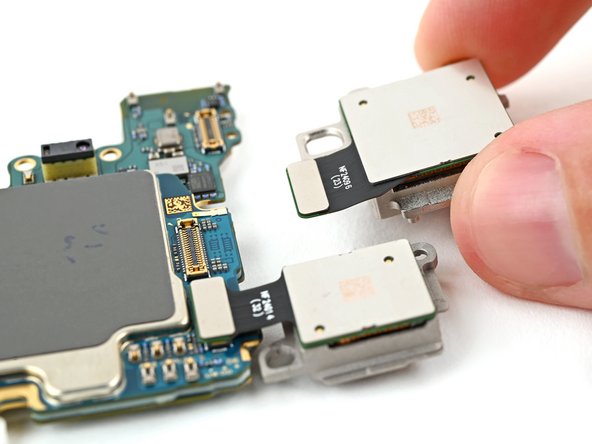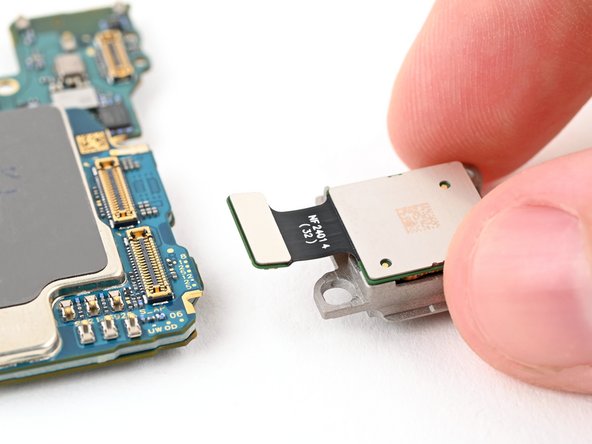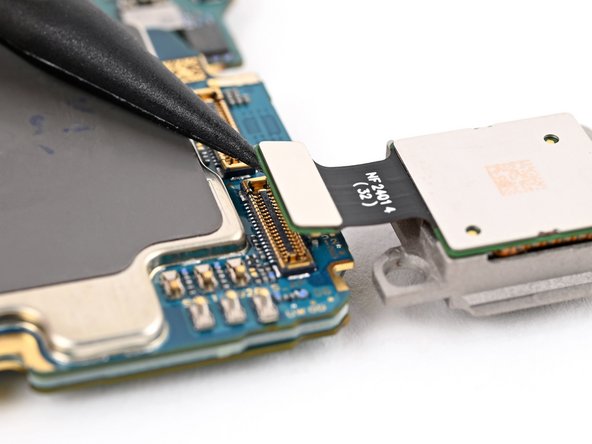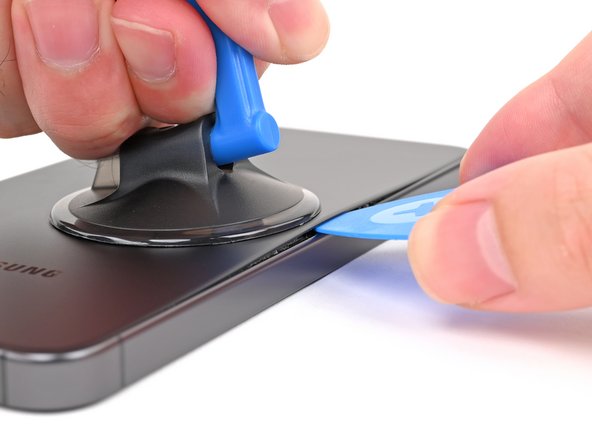Samsung Galaxy S24+ Motherboard Replacement Guide
Duration: 45 minutes
Steps: 36 Steps
Ready to give your Samsung Galaxy S24+ a little TLC? This guide is your go-to for swapping out that motherboard like a pro. Follow these steps and get your device back in action. And remember, if you need help, you can always schedule a repair.
Step 1
Let’s get that battery down to 25% or less. A fully charged lithium-ion battery can be a bit of a firecracker, so we want to be safe! If your battery looks like it’s trying to escape its casing (we’ve all been there!), be extra careful, okay? If you need help, you can always schedule a repair.
– Disconnect any cables from your device.
– Press and hold the side key and volume down button, then tap ‘Power off’ to shut down your phone.
Step 2
When using heat to loosen things up, remember that a hair dryer, heat gun, or hot plate can be your best friend – just be gentle and avoid overheating, as your phone’s display and internal battery are sensitive to high temperatures. If you need help, you can always schedule a repair
– Let’s get started by heating up an iOpener and applying it to the right edge of the back cover for about two minutes. This will help loosen things up and make the repair process smoother. If you need help, you can always schedule a repair
Tools Used
Step 3
If you’re having a tough time making a gap, don’t sweat it! Just add a little more heat to loosen that adhesive up. Be sure to check out the iOpener instructions to keep things from getting too toasty.
– Alright, let’s get this party started! Grab your suction handle and stick it to the back cover, right near the center of the right edge.
– Now, give that suction handle a good pull! You want to create a little gap between the cover and the frame. Don’t be shy, use some muscle!
– With that gap open, slide an opening pick in there. You’re almost there!
Tools Used
Step 5
– Let’s get this party started! Heat up your iOpener and gently apply it to the bottom edge of the back cover for a couple of minutes. It’s like a warm hug for your phone, just a bit more intense.
Tools Used
Step 7
– Pop in a second pick at the bottom right corner to get started.
– Gently slide that opening pick over to the bottom left corner to break free the adhesive.
– Leave the pick resting in the bottom left corner to keep the adhesive from sticking back together.
Step 8
– Time to get this repair started. Apply a heated iOpener to the left edge of the back cover for about two minutes. If you need help, you can always schedule a repair
Tools Used
Step 9
– Gently twist the opening pick around the bottom left corner to break free the adhesive. Keep it smooth and steady!
Step 10
– Now it’s time to add a third opening pick – slide it into the bottom left corner and get ready to loosen things up.
– Gently push the pick upwards towards the top left corner to break the adhesive seal – you’re making great progress!
– Leave that pick right where it is, near the top left corner, to keep the adhesive from sticking back together. If you need help, you can always schedule a repair
Step 11
– Time to get this repair started. Apply a heated iOpener to the top edge of the back cover for about two minutes. If you need help, you can always schedule a repair
Tools Used
Step 13
– Let’s loosen that adhesive! Slide a fourth opening pick in at the top left corner.
– Now, give that adhesive a little nudge by sliding the pick toward the top right corner.
– Keep that pick chillin’ near the top right corner to keep the adhesive from getting too cozy.
Step 14
Hey there, look for a little square of glue around the rear microphone, just above the flash. It’s like a tiny sticker holding it in place.
– Let’s get this back cover off! Line up the tip of your opening pick with the flash.
– Slide the opening pick under the top of the back cover, keeping it close to the edge. You’ll feel it start to snag on the adhesive – keep going!
– Now, slide the pick down towards the bottom of the phone while gently lifting the cover. Keep at it until the cover is completely free from the adhesive. You’ve got this!
Step 15
If the back cover is being a little stubborn, use an opening pick to give it a little nudge and loosen any adhesive that might have gotten a bit too cozy.
Now’s a great time to power on your phone and make sure everything’s working like a charm before you put it all back together. Remember to power it back down completely before you keep going.
Keeping your phone water-resistant after the repair depends on how well you reapply the adhesive, but just a heads up – it’s not going to be as IP-rated as it was before. But hey, we’re here to help! If you need help, you can always schedule a repair.
– First things first, let’s get that back cover off! Grab it and give it a gentle tug.
– Now, for reassembly fun:
– Use tweezers or your fingers to carefully peel off all that sticky adhesive from both the back cover and the phone itself. If it’s being stubborn, a little heat or some isopropyl alcohol (90% or higher) combined with a coffee filter or lint-free cloth can work wonders.
– If you’re using custom-cut adhesives, be sure to check out this handy guide.
Tools Used
Step 16
Take a peek at the board near each press connector – you’ll spot an arrow that shows you exactly where to pry, making the process a whole lot easier. If you need help, you can always schedule a repair
– Time to give that wireless charging coil press connector a little nudge! Use your trusty spudger to carefully pry it up and disconnect it from the motherboard.
– Now, let’s reconnect those connectors with a little finesse! Align the connector perfectly over its socket and gently press down on one side, then the other, until you hear that satisfying click. Don’t force it—just be smooth and confident! If it’s being a little stubborn, just reposition it and try again. You got this! If you need help, you can always schedule a repair.
Tools Used
Step 17
– Grab your trusty Phillips screwdriver and remove the thirteen 3.5mm-long screws that hold the wireless charging coil and loudspeaker in place:
– You’ll find six screws securing the wireless charging coil – take those out first
– Next, remove the seven screws that keep the loudspeaker locked down. If you need help, you can always schedule a repair
Step 18
– Time to get started. Insert the point of a spudger into the notch at the top left corner of the loudspeaker – it’s marked with an arrow to help you find the spot.
– Gently pry up to release the loudspeaker from the frame. If you need help, you can always schedule a repair
Tools Used
Step 19
– Let’s get that loudspeaker out! Gently lift it up from the frame with your fingers.
– Now, it’s time to remove the wireless charging coil and loudspeaker from the frame. You got this!
– When you’re putting everything back together, make sure to press around the edges of the loudspeaker to clip it back into place before putting those screws back in. You’ll be a pro in no time!
Step 20
– Time to get started! Use a trusty spudger to carefully pry up and disconnect the battery press connector. If you need help, you can always schedule a repair
Tools Used
Step 21
– Grab your spudger, it’s time to get those interconnect cable press connectors off the daughterboard! Carefully pry them up and disconnect them. You got this! 💪
Tools Used
Step 22
– Grab your spudger (it’s like a tiny superhero tool!) and gently pry up those interconnect cable press connectors. We’re disconnecting them from the motherboard, so they can take a little break from their hard work.
Tools Used
Step 23
– Let’s get started by carefully removing the interconnect cables from your phone. This is a crucial step, so take your time and make sure they’re completely disconnected.
Step 24
– Time to get this repair started. Use a spudger to carefully pry up and disconnect the earpiece speaker press connector. If you need help, you can always schedule a repair
Tools Used
Step 25
– Let’s get started by removing the five 3.5mm-long screws that hold the earpiece speaker in place – just grab your trusty Phillips screwdriver and you’re all set. If you need help, you can always schedule a repair
Step 26
– Let’s get that earpiece speaker out! Gently slide the flat end of your spudger between the bottom edge of the speaker and the metal plate on the motherboard.
– Now, give that spudger a little twist to unclip the earpiece speaker. Take it out and give it a high five for being so easy to remove!
– When you put it back, remember to slide the top edge of the speaker into the frame first. Then gently press down to clip it back in. You’ve got this!
Tools Used
Step 27
Keep that spudger in its happy place! Avoid poking it around other areas to prevent any unintentional damage to those delicate surface-mounted components.
– Slide the spudger’s tip gently under the top left corner of the upper antenna press connector like you’re lifting a secret hatch.
– Give it a little nudge and disconnect that upper antenna press connector from the motherboard with a flourish!
Tools Used
Step 28
Keep that spudger in its happy place! Avoid poking it anywhere else to steer clear of any unfortunate accidents with those delicate surface-mounted components.
– Time to get started – carefully insert the tip of a spudger under the bottom right corner of the front camera press connector, making sure not to damage any surrounding components.
– Gently pry up and disconnect the front camera press connector from the motherboard. If you need help, you can always schedule a repair
Tools Used
Step 29
– Grab a spudger, pop up, and unhook those display and lower antenna cable press connectors from the motherboard. Got stuck? No worries, if you need help, you can always schedule a repair
Tools Used
Step 30
– Alrighty! Time to tackle those two 3.5 mm-loppin’ screws holdin’ down your motherboard. Grab that trusty Phillips screwdriver, and let’s get ‘er done! Need some help? We’ve got you covered with schedule a repair.
Step 31
– Gently slide the flat end of a spudger into the earpiece speaker cutout, right between the top edge of the motherboard and the phone frame.
– Give a little nudge against the frame to pop that motherboard out of its cozy spot and lift it away.
– When you’re ready to put everything back together, just make sure all those pesky cables are out of the way before you snug the motherboard back into the frame.
Tools Used
Step 32
Alright, let’s tackle those rear cameras! They’re all snuggled up together, so we’ll take them out one by one, starting with the ultrawide camera, then the main camera, and finally the telephoto camera. Think of it like a camera dance party – ultrawide starts the party, then the main camera joins in, and finally the telephoto camera shows up to make things extra awesome! Remember, the ultrawide camera is the one chilling at the top when everything is put together.
If you need help, you can always schedule a repair
– Start by flipping the motherboard so you can get a good look at those rear camera press connectors. Let’s make sure we can see everything clearly!
– Grab your trusty spudger and carefully pry up the ultrawide camera press connector to disconnect it. You’ve got this!
Tools Used
Step 33
That ultrawide camera is holding on tight with two metal pegs – they’re like its little buddies keeping it in place. You’ll need to gently remove those pegs to free the camera.
– Let’s get that ultrawide camera out! Gently slide the pegs out of their holes on the motherboard. You got this!
Step 34
The main camera is located right in the center.
– Time to get started – use a spudger to carefully pry up and disconnect the main camera press connector. Take your time, you got this!
– Now, gently lift the main camera off the motherboard and remove it. If you need help, you can always schedule a repair
Tools Used
Step 35
The telephoto camera is located at the bottom when it’s all set up.
– Let’s get this telephoto camera out! Use your trusty spudger to gently pry up and disconnect the camera’s connector. You’re almost there!
– Now, lift that telephoto camera right off the motherboard. You got this!
– Time to put everything back together! Here’s the trick to making sure your rear cameras fit together perfectly:
– Telephoto (the little one with the metal back) goes in first.
– Main camera (the big guy with the metal back) goes in next.
– And finally, Ultrawide (the one with the plastic back) goes in last. You’re a pro! If you need help, you can always schedule a repair.
Tools Used







